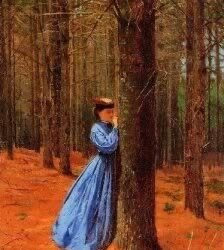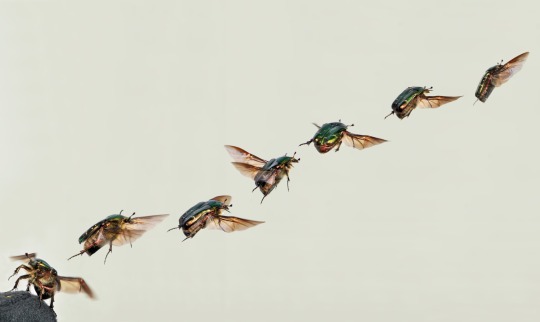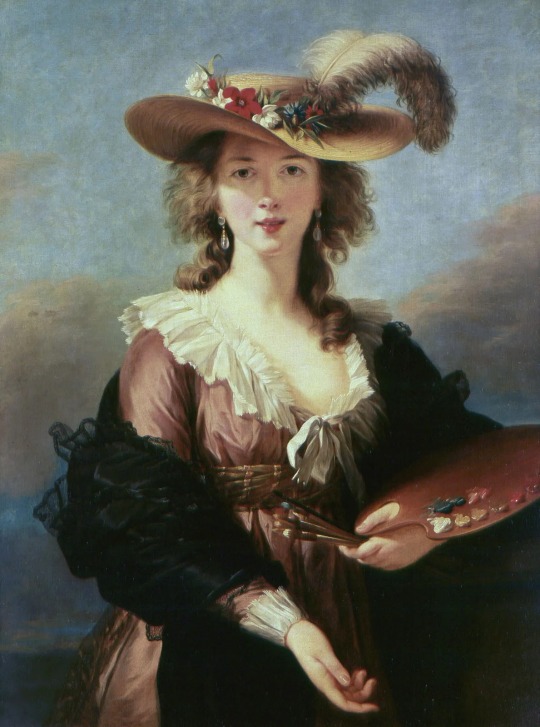katiewalker03
6 posts
Don't wanna be here? Send us removal request.
Text
For my project i chose to capture the movement of a horse . My horse Chewy means the world to me so this project also shows me . My form of media would be finding ways to make an animal make movement while getting it on camera . It took awhile but the ending photo i think i truly captured the life of a horse.




0 notes
Text
Jackson Pollock was a very interesting artist . He had a lot of his own demons going through alcoholism . He decided to dedicate himself to his art which lead him to become sober for 2 years . His main way of art was called “drip painting” although drip painting doesn’t show an exact object or meaning . Pollock found a way to find himself through this type of art. It was said he was almost in a trance when creating his artwork. His artwork was deeper than him it showed emotion and a story within himself




0 notes
Text
Virtual sketch book 3
Certainly, here’s a description and analysis of The Assumption of the Virgin by Francesco Gnacci.
1. What is it made of?
This painting is an oil on canvas, typical of Italian Renaissance and Baroque religious works. This medium allows for vibrant colors, deep contrasts, and subtle gradations that bring religious scenes to life.
2. How big is it?
While I don’t have exact measurements for Gnacci’s version, paintings of The Assumption of the Virgin in similar Renaissance-Baroque styles are often quite large, typically ranging from 6 to 12 feet in height, allowing for an imposing presence in church altarpieces or chapels.
3. Description of the Artwork:
Imagine a luminous scene where the Virgin Mary is lifted toward the heavens, surrounded by a celestial aura and encircled by cherubs and angels. She wears flowing robes, often depicted in blue and white to symbolize purity and holiness. Her face might show calm acceptance as she rises, with arms slightly outstretched in an embrace.
The background is usually divided into two parts: the earthly realm below, perhaps showing disciples or followers, and the heavenly space above, glowing with light. Golden hues and clouds give an ethereal feel to the upper section, while darker, earthier tones might anchor the bottom half.
4. Colors and Shapes Used:
Gnacci likely used vibrant blues and whites for Mary, golden yellows and whites for the heavenly light, and warmer earth tones for figures below. The shapes in the artwork flow upward, with swirling clouds and figures leading the eye toward Mary. The composition creates a spiral effect, reinforcing the motion of her ascension.
5. Subjects Represented:
The Virgin Mary is the central figure, surrounded by cherubs and angels. Followers of Mary might be seen below, looking upward in awe. These elements represent both the divine and earthly realms, with Mary’s ascent bridging the two.
6. Design of the Work:
The work is designed to lead the viewer’s eyes upward, creating a sense of movement and ascension. The figures below may seem more static and grounded, contrasting with the lighter, more dynamic shapes and colors above.
7. Is it Balanced?
Yes, the painting is balanced vertically, with Mary as the focal point at the center. The upward movement of clouds and angels provides symmetry, and while the scene is dynamic, it maintains harmony through balanced light and color distribution.
8. What is Emphasized?
Mary is emphasized through her positioning, colors, and surrounding light. She is the brightest part of the composition, often placed in the golden ratio to draw viewers’ attention instantly.
9. My Feelings about the Work:
The painting evokes a sense of awe and tranquility. Seeing Mary lifted into the heavens, surrounded by divine light, brings a feeling of peace and reverence. The gentle expression on her face, contrasted with the intensity of the followers below, captures the wonder of the Assumption. The ascending motion gives a sense of hope and spiritual elevation, which feels uplifting.
The artwork’s use of light and color, combined with the dynamic yet balanced composition, evokes a sense of divine mystery and grandeur. It’s designed to inspire faith and contemplation, making one feel connected to something transcendent.
The Assumption of the Virgin by Francesco Gnacci (or Gnaccarini) is a work that fits within the broader tradition of religious art depicting the Assumption, a theme central to Christian art since the Middle Ages. This subject illustrates the Virgin Mary’s ascent into heaven, body and soul, which the Catholic Church celebrates as a moment of divine grace and honor.
Francesco Gnacci, while not as widely known as some Renaissance and Baroque masters, contributed to the religious art movement in Italy. His work reflects the period’s strong focus on religious narratives and emotional engagement. Artists in Italy during his time were highly influenced by the Renaissance’s humanistic approach to spirituality, which sought to make divine figures more relatable yet awe-inspiring. This artistic direction was furthered by the Counter-Reformation’s call for art to inspire piety, resulting in grand, emotionally charged depictions of saints and biblical events.
Gnacci’s Assumption of the Virgin would likely have been commissioned for a church or private chapel, as was typical for works of this nature. Such artworks aimed to elevate the viewer’s spirit, encouraging a sense of reverence and closeness to the divine. The Assumption theme itself became particularly popular in the Baroque era due to its dramatic and upward-moving composition, which allowed artists to experiment with dynamic forms, contrasting light, and expressive figures to convey the divine mystery of Mary’s Assumption.
In the broader context, The Assumption of the Virgin as an artistic theme symbolized the hope of eternal life and reflected a deepening devotion to Mary during this period. This would have resonated with contemporary audiences, who would have looked to such works for both inspiration and comfort in their faith.
Certainly, here’s an analysis of The Assumption of the Virgin by Francesco Gnacci in terms of its movement, context, and message:
1. What movement is the artwork associated with?
The Assumption of the Virgin by Francesco Gnacci is associated with the Baroque movement, a period that emphasized dramatic expression, intense emotion, and dynamic compositions. The Baroque period, which flourished from the late 16th to the early 18th century, was a time when religious art was used as a powerful tool to inspire awe and devotion, often under the influence of the Counter-Reformation.
2. Who commissioned it?
While specific details about the commission are not available for this piece, religious artworks of this nature during the Baroque era were typically commissioned by churches or wealthy patrons who supported the Catholic Church’s efforts to create art that conveyed religious truths. These works were often intended for prominent display in churches or chapels, where they could inspire the faithful.
3. What does the artwork say about the artist that made it?
Gnacci’s rendering of The Assumption of the Virgin shows his skill in capturing both the emotional and spiritual aspects of the scene. The emphasis on movement, light, and expressive faces indicates that Gnacci was deeply influenced by Baroque ideals, aiming to evoke awe and devotion. His attention to Mary’s serene expression and the powerful use of light suggests he saw the divine as both majestic and compassionate. It also shows his dedication to religious themes, common among Baroque artists.
4. Can you tell what the artist was trying to say?
Gnacci was likely trying to convey the glory and divine favor bestowed upon Mary through the Assumption. The upward movement, with Mary surrounded by angelic figures and radiant light, symbolizes her purity and grace as she ascends to heaven. Through this, Gnacci is expressing the belief in Mary’s holy role and the promise of salvation for the faithful, a message central to Catholic doctrine and especially significant during the Baroque period.
5. How clearly does the artist get their message across?
The artist’s message is clear and effective. By using bright light to center Mary, surrounded by cherubs and angels, Gnacci creates a distinct separation between the earthly and heavenly realms, drawing the viewer’s eye upward and creating a sense of ascension. The visual cues—the upward motion, the luminosity around Mary, and the reverent figures below—make it easy for viewers to understand the moment of divine transition being depicted. The Baroque style’s dramatic composition and emotive qualities convey a clear message of divine grace and reverence for Mary’s unique role, successfully inspiring viewers with a sense of wonder and spiritual uplift.
Certainly, here’s a critique and conclusion based on an analysis of The Assumption of the Virgin by Francesco Gnacci.
Critique of the Artwork
Francesco Gnacci’s The Assumption of the Virgin is a compelling example of Baroque religious art, and it serves as both a narrative and a spiritual experience. The artist skillfully uses light, color, and movement to convey the moment of Mary’s ascension into heaven, capturing the viewer’s attention and creating a powerful visual statement of divine grace. Gnacci’s work exhibits hallmarks of the Baroque style, particularly the contrast between light and shadow, which creates a heightened emotional atmosphere. The painting effectively separates the earthly realm from the heavenly, inviting viewers to feel the reverence and transcendence associated with Mary’s Assumption.
The composition itself is thoughtfully designed to draw the eye upward, symbolizing spiritual elevation and the glory of the divine. The central positioning of Mary, bathed in radiant light, allows her to stand out against the background, underscoring her role as a bridge between humanity and divinity. Gnacci also achieves a harmonious balance between movement and serenity, particularly in Mary’s peaceful expression and the gently swirling cherubs that guide her ascent. This movement embodies the Baroque era’s emphasis on drama and spiritual ecstasy, drawing the viewer’s focus toward the heavenly message rather than mere representation.
The artist’s technical skill shines through in his use of color and light to differentiate between the figures of heaven and earth. The use of soft whites and golds around Mary, paired with darker, more subdued tones below, symbolizes purity contrasted with earthly limitation. Gnacci’s attention to these details showcases his understanding of both technique and symbolism, aiming to evoke reverence and inspire faith.
Conclusion: Importance of the Artwork
The Assumption of the Virgin by Francesco Gnacci holds significant cultural and spiritual value as it reflects the Catholic Church’s influence on art and society during the Baroque period. The artwork emphasizes the ideals of divine grace, purity, and the hope of salvation, central tenets that were vital to many during this era of religious reform. By portraying Mary’s Assumption, Gnacci’s painting would have served as a visual testament to the importance of faith, encouraging viewers to reflect on their spiritual lives.
This work of art is important because it exemplifies how art can elevate religious narratives into universal themes of hope, purity, and devotion. The Assumption of the Virgin transcends its historical context by capturing human longing for connection with the divine, something that resonates across cultures and time periods.
Personal Reflection
I chose this artwork because of its capacity to convey a deep, spiritual message through both its aesthetic beauty and its historical significance. I was drawn to the way it uses light and composition to create an emotional impact, making viewers feel a sense of wonder and reverence. Studying this piece has reminded me of how art can serve as a bridge between the earthly and the divine, allowing us to explore complex ideas about faith, transcendence, and human longing in a visual form.
0 notes
Text
Virtual Sketch Book 2
Unity and Variety- Unity is the visual appearance of a singular object where variety is more abstract and “busy” appearance of an object. They both are the complete opposite of each other .

This pictures shows Unity through the straight lines whereas the variety is shown by the different colors .
Balance - is an equal object or thing . Meaning it is an equilibrium. Something in my every day life can be balancing school , work, and hobbies . When balancing these it makes me life at peace because i make it a perfect balance .

Balance is shown in this picture by the evenness of the lines . They are all parallel and make the star look balanced .
Emphasis and Subordination- emphasis is the main view point of the painting. Where subordination is the objects that aren’t as defined in the painting

This painting shows emphasis on the woman leaning on the tree . The subordination is the trees behind her because they are not as clear.
Directional forces- Using objects in a painting or strokes to guide the eye of the viewer.

Directional force is shown because you can see the movement of the beetles which makes your eyes as the viewer follow where they are going.
Repetition and rhythm- repeating a system to show movement in a piece of art .

This picture shows repetition by the hay piles aligned . this shows symmetry and movement .
Scale and Portion- using different sizes to vary the composition of the painting.

This art work shows portion because the rats are much larger than the woman standing next to the artwork.
Elisabeth Vigee-Lebrun Pg 5.1

This painting is two demential. It uses more light colors to show more elegance in Elisabeth. It also shows volume and light with it being a flat surface . All of these show expression in a unique way by choosing the portion and scale of the painting.
In my life i can see my job as very stressful . I’m very busy and am there most of the time. The restaurant has all black walls including black tables and grey countertops . This can be seen as very dark and unsettling . When I go home i have many bright colors . My room is blue and my kitchen is yellow . This brightens and soothes my mood after a long day . This shows my serenity by being able to relax . The value of this is to show the difference of how color can make you view things with different emotions . Another happy place i have is the barn. i love love loveeeeee the barn. it’s my safe place whenever something goes wrong in my life. the saturation in the sunset provides warmth for not only me, but my horses as well. the value it holds in my heart is undeniably beautiful. the intensity that occurs when i have my horse courses is insane because i feel an incredible adrenaline rush and it’s the most beautiful thing.

This painting means a lot to me because i love my cat as well as i love the brand Yeti. I would love to be a yeti ambassador one day . I own a lot of Yeti products and could not suggest them enough . Another thing i used in my painting is the color pallet . I use cool tones of color because green and blue are my favorite colors .
Photo Journalism
The event being depicted in this photo is people turning to god in their rough times . It also is depicted as a community coming together to bring someone to god who is going through tough times . This photograph visually represents the power of religion. It shows the story of the community a religion creates and does for the people within the community.
The event depicted for this photo is about poverty. Seeing different parts of the world of women and their children malnourished. This photo shows the story about what’s going on in our world today . Poverty can be seen in this photo and express how we need to fix our society.
6373B87F-CC6A-43CE-A2B9-B6E5669FB870.jpeg
0 notes
Text

Photo Journalism
The event being depicted in this photo is people turning to god in their rough times . It also is depicted as a community coming together to bring someone to god who is going through tough times . This photograph visually represents the power of religion. It shows the story of the community a religion creates and does for the people within the community.

The event depicted for this photo is about poverty. Seeing different parts of the world of women and their children malnourished. This photo shows the story about what’s going on in our world today . Poverty can be seen in this photo and express how we need to fix our society.
0 notes
Text
1. My name is Katie , a fact about me is i do competitive show jumping.
2. 5 detailed facts about Vincent van Gogh ," The Starry Night".
1. Starry night was inspired from Van Gogh staring out his window for twelve months while trying to deal with his depression.
2. Starry night actually has a biblical meaning. The eleven stars reference Joseph from the bible.
3. It only took Van Gogh a weekend to paint Starry Night.
4. Starry Night is worth around 70-100 million dollars.
5. Starry night is kept at the museum of modern art in Newyork.
3. When i first saw this painting i thought it was just a beautiful view of a city. As i learned more about Van Gogh and Starry night i realized it had way more of a deeper meaning. Van Gogh went through very severe depression . He painted Starry night to try and repreive his depression. Not only was he depressed but, he actually was in an Asylum. I see this painting different now because you can see how Van Gogh viewed the outside while being stuck in an asylum.

2. This art is something that is meaningful to me because it is the the first turkey i ever got . Not only was it my first but i got it with my grandpa who is someone that is very important in my life . The inspiration for this was from growing up around my grandpa and dad . When i was kid we always had hunting decor around our home . I always wanted one that i got by myself. It serves a special memory whenever i see it because it takes me back every time i have been hunting . Spending all day in nature and being around the people i love . I think it’s beautiful because even though it is just turkey feathers it holds memories and stories that i only know .
3. I am 21 years old and have grown up in Florida . I am a white female. I like to go mudding , horseback riding , and hunting . I am a member of an equine show jumping community . I have a huge love for animals . I am a bartender at Oak and stone right now but want to be a vet tech . Something unique about me is that i always try to see the positive side of things even when it’s not the best situation .
4.

1 note
·
View note